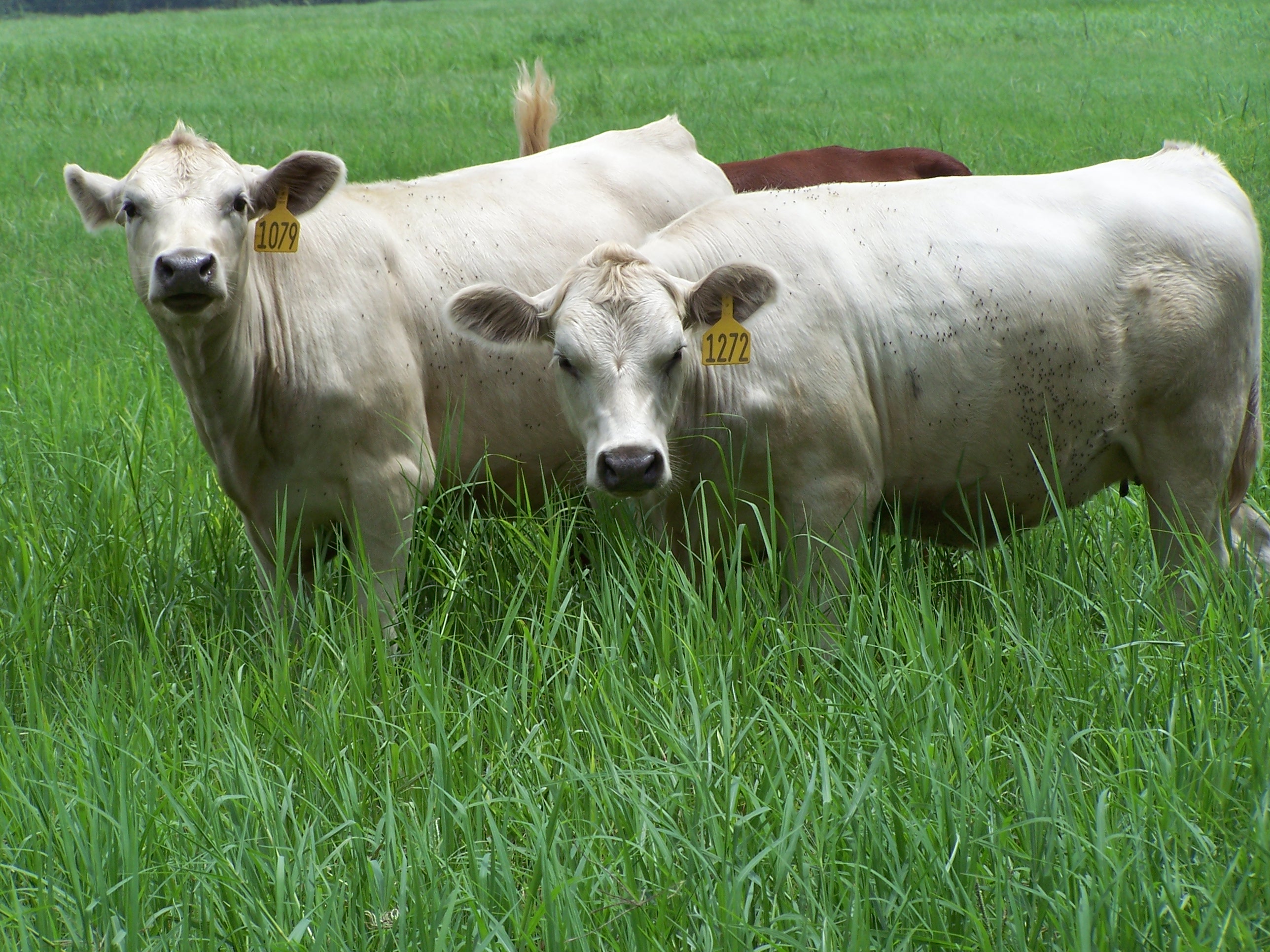By Jed Dillard

Ona “White Angus” a multibreed composite selected for heat tolerance. Photo credit: UF/IFAS Archives
Florida is a hot place. Hot places are hard on cattle performance.
Those two facts have complicated cattle production in Florida since the first imports were offloaded from the boat nearly five hundred years ago. Since that day, the debate over how to address these stresses has sometimes been as acrid (pungent) as the hold of that boat must have been after holding cattle for the two months or so it took to sail from Spain to Florida.
The original and long uncontroversial breakthrough was the addition of Zebu blood to the Florida cow herd. “Crossbred cow” has long implied a Brahman crossbred in Florida, and the Brahman F1 female is justifiably legendary in her ability to handle the Florida environment. In relatively recent years, Zebu cattle have faced resistance (some justified, some not) from feeders and consumers. As the demand for a higher quality, more uniform retail product has grown, there seems to be increased pressure to make the national beef cow herd the same from Wacissa to Wyoming. Despite the improvement of management inputs across the country, environments remain widely different and require genetic diversity to optimize production in those environments.
Efforts to maintain the heat tolerance of the Southern cow herd, while changing carcass quality include selection within Zebu populations, reducing the Zebu influence in the cow herd, introducing the “Slick Hair Gene” found in Senepol and some other Caribbean breeds, and the development of new composite breeds such as the “White Angus” herd at the UF/IFAS Range Cattle Research Station at Ona. Research has proven that lighter colored cattle withstand heat better than darker colored cattle. Accordingly, many Florida cow herds retain some Zebu influence and are predominantly red or dun colored.
But what do you do if “All my cows are all black, and I want to keep them that way?”
Recent work (Gray, et al. 2011) shows variation in shedding the winter coat of Angus cows is inversely related to calf weaning weight and cow Body Condition Score. (Earlier hair shedders wean heavier calves and have higher BCS scores.) Heritability of the trait has been estimated to be 35%. Late shedding or rough hair coat can also be affected by nutrition, genotype by environment interactions, or grazing endophyte infected fescue. This means selection will result in genetic change. However, as the number of traits evaluated continues to increase, individual trait change will be reduced. This suggests culling extremely late shedding cows may be the most feasible strategy. Given the reduced production and decreased BCS, the cows may already be falling out of your herd due to lighter calves or failing to breed.
Source:ufl.edu